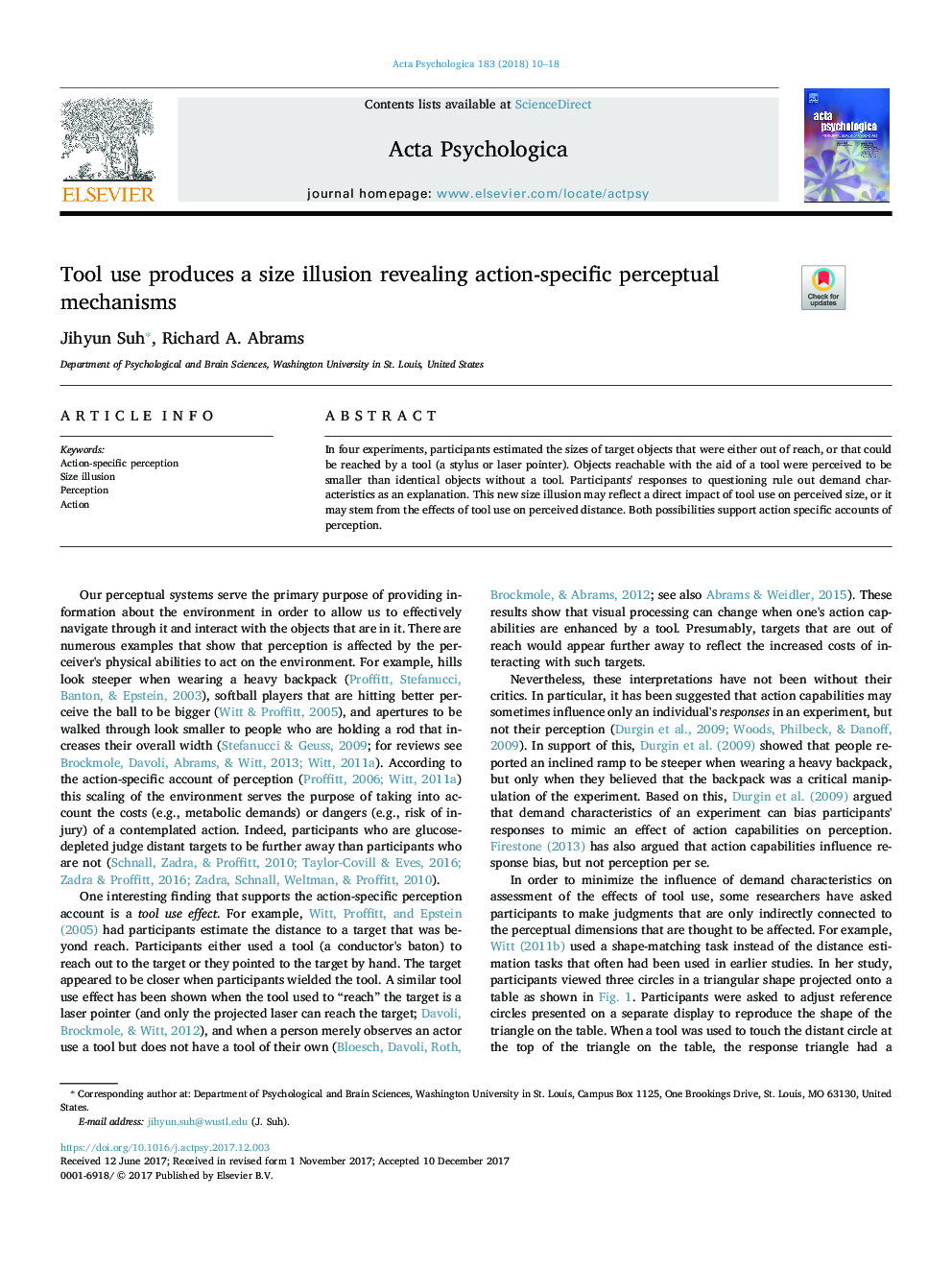| Article ID | Journal | Published Year | Pages | File Type |
|---|---|---|---|---|
| 7276817 | Acta Psychologica | 2018 | 9 Pages |
Abstract
In four experiments, participants estimated the sizes of target objects that were either out of reach, or that could be reached by a tool (a stylus or laser pointer). Objects reachable with the aid of a tool were perceived to be smaller than identical objects without a tool. Participants' responses to questioning rule out demand characteristics as an explanation. This new size illusion may reflect a direct impact of tool use on perceived size, or it may stem from the effects of tool use on perceived distance. Both possibilities support action specific accounts of perception.
Related Topics
Life Sciences
Neuroscience
Cognitive Neuroscience
Authors
Jihyun Suh, Richard A. Abrams,
